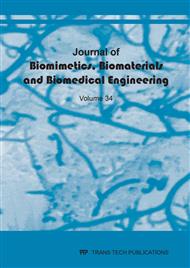p.1
p.10
p.20
p.29
p.37
p.57
p.68
p.75
p.82
Application Design of Dengue Hemorrhagic Fever Patients Screening Using Naive Bayes Method
Abstract:
Dengue Hemorrhagic Fever is a disease which is endemic in most districts / cities still becomes a public health problem in Indonesia. The awareness of people to the dengue viral infection and its symptoms are needed to decrease the fatality of this disease. The community need to be known the symptoms thereby they could intervened and prevent from falling in to worse condition. This study was conducted to design system which could diagnose the onset of the disease with 3 levels of possibilities namely Grade 1 Dengue Hemorrhagic Fever, Grade 2 Dengue Hemorrhagic Fever, and Non Dengue Hemorrhagic Fever. The system is build based on patient medical records of Dr. Wahidin Sudiro Husodo General Hospital, Mojokerto, East Java using the Naive Bayes method. The method of this study including several steps such as collecting data, preprocessing data, designing database, interface design, calculation and processing data, classification and analyzing data and evaluating application. Determining the results of the application diagnose requires posterior calculation which searches the highest values in three degrees as the results of the initial diagnose. The application as a device for an early diagnosis of dengue hemorrhagic fever has a high accuracy value of 97% out of the 30 tested data. The homogenization of the training data and the test data by sex and age can be considered in future research.
Info:
Periodical:
Pages:
20-28
Citation:
Online since:
October 2017
Price:
Сopyright:
© 2017 Trans Tech Publications Ltd. All Rights Reserved
Share:
Citation:


